Howdy,
This makes my life so much easier
Full view of set-up
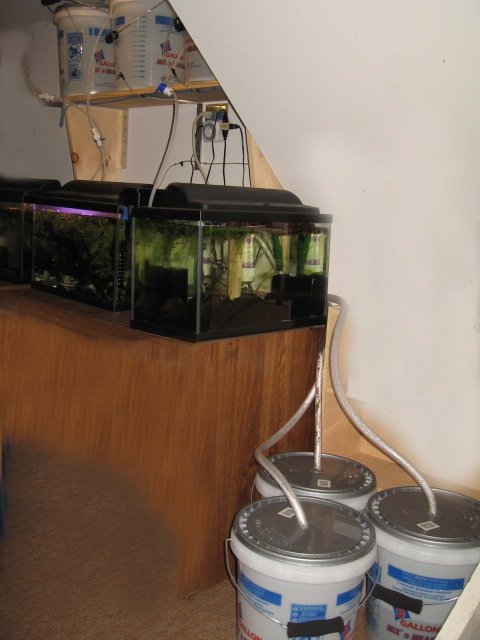
To change water, all I have to do is refill the buckets on the shelf and empty the buckets on the floor. This has several advantages:
Here's the system:
Semi-transparent 5 gal buckets mounted above tanks
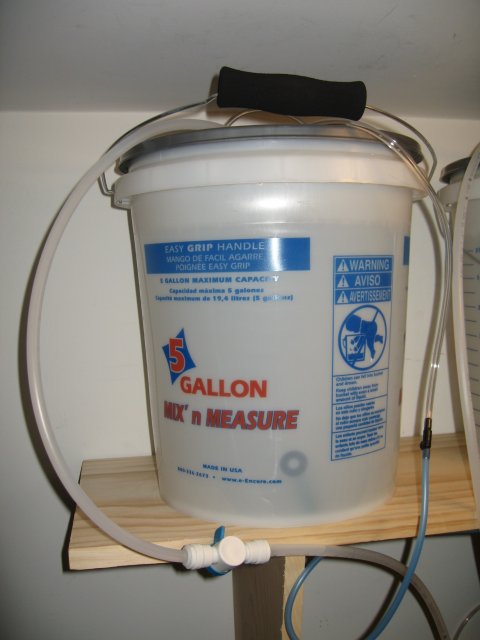
Each contains an air line to keep water from getting stale, and drain tubing.
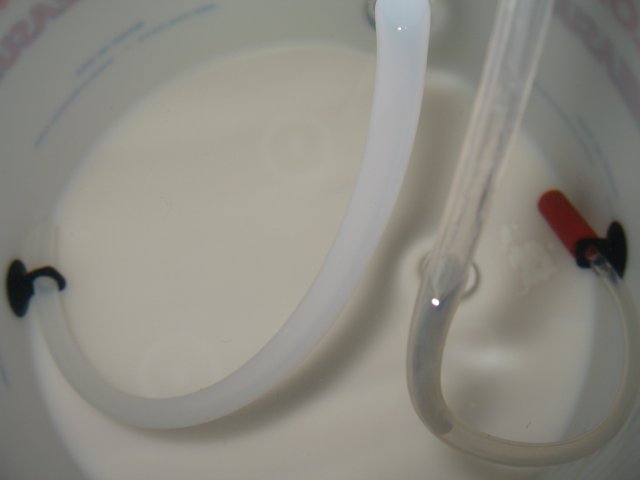
One bucket per tank. Essential: Valve to regulate water flow (i.e. drip rate). I adjust drips to the bioload of each tank. One tank only holds one fish, another an entire breeding colony. Needless to say that the first one drips slower than the latter.
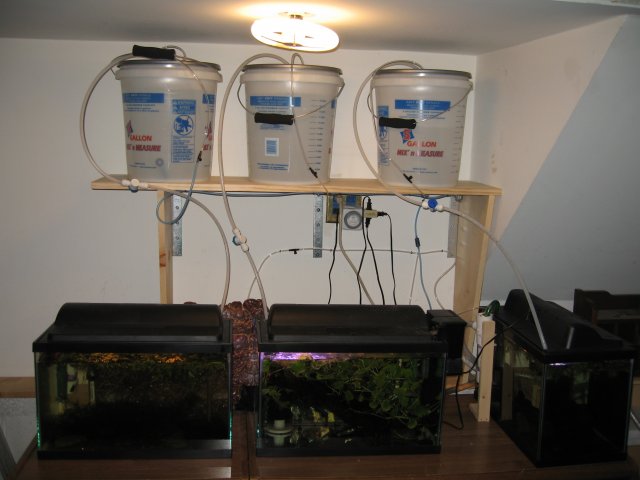
Overflow on each tank, using an Eheim filter intake pipe with filter basket as bridge. Compared to white PVC bridges, this allows to check for air-locking.
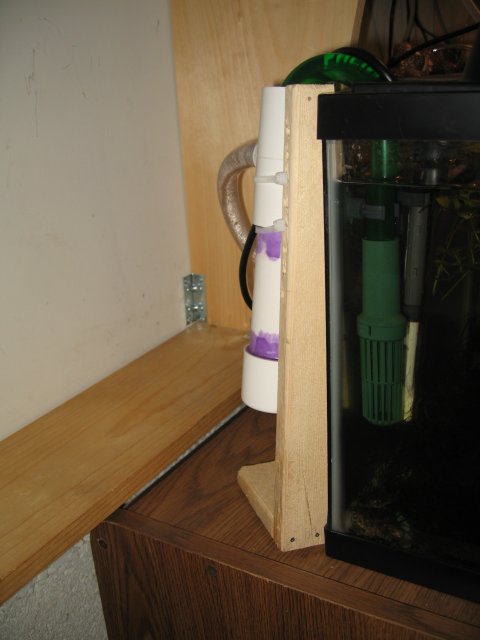
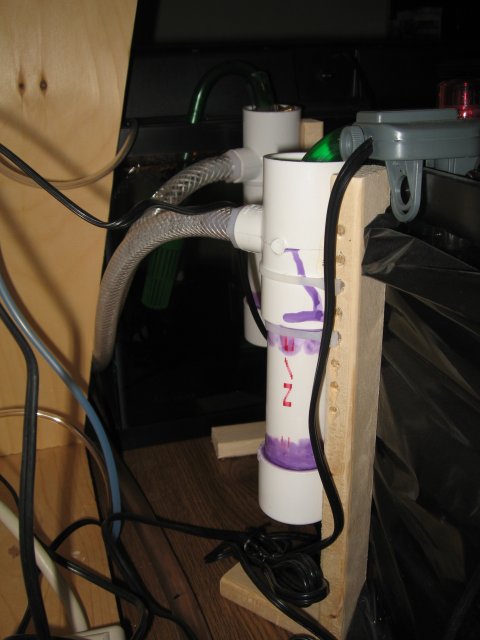
Hoses drain into waste buckets
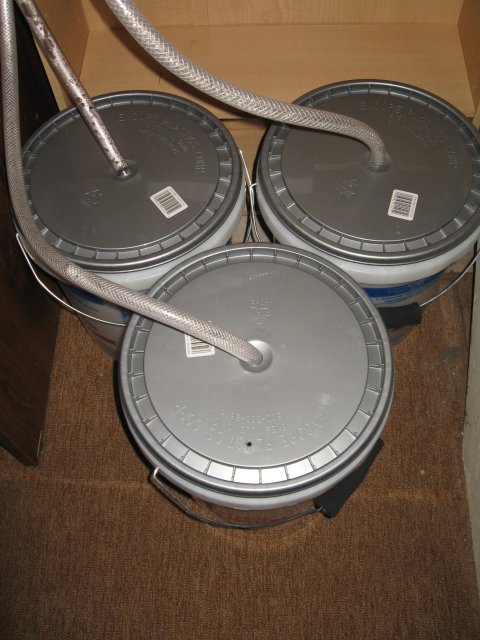
HarleyK







This makes my life so much easier
Full view of set-up

To change water, all I have to do is refill the buckets on the shelf and empty the buckets on the floor. This has several advantages:
- My tanks have a constant, good water quality. No more pollution peaks during service intervals. That greatly affects growth and health.
- Water changes have no more impact on new or sensitive fish, I don't even have to lift up the canopy.
- I only have to haul buckets, no more having to mess around with hoses, and no more rolling up my sleeves and getting wet.
- As compared to a central drip system which requires permanent plumbing, I set this one here up in one evening after work.
- Every tank can have different water parameters, all I have to do is to fill each bucket accordingly - which is what I do: One tank is 7 tbsp salt/10 gal, one is 2 tbsp/10 gal and plant ferts, one is just conditioner.
- Each system remains isolated: I can set up one or more quarantine tanks, and they remain independent of each other. Matter of fact, I can change water on all tanks without having to worry about cross-contamination. Just fill up all buckets first and then empty waste buckets
- I can service (fill&empty) the system for three tanks within 10-15 minutes.
- Water levels remain constant. Hang-on filters are notorious for increased evaporation. Now my overflows determine the water level.
- Compared to a hard-plumbed system, this won't cause a flood when an overflow fails.
Here's the system:
Semi-transparent 5 gal buckets mounted above tanks

Each contains an air line to keep water from getting stale, and drain tubing.

One bucket per tank. Essential: Valve to regulate water flow (i.e. drip rate). I adjust drips to the bioload of each tank. One tank only holds one fish, another an entire breeding colony. Needless to say that the first one drips slower than the latter.

Overflow on each tank, using an Eheim filter intake pipe with filter basket as bridge. Compared to white PVC bridges, this allows to check for air-locking.


Hoses drain into waste buckets

HarleyK









